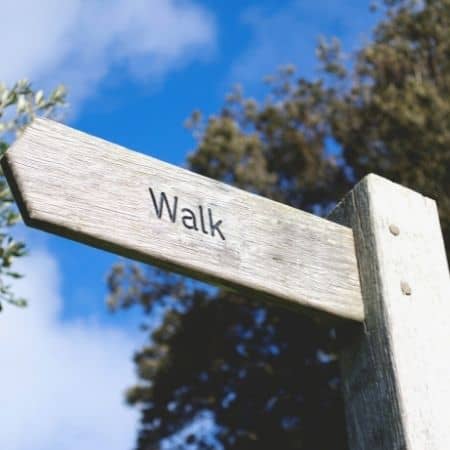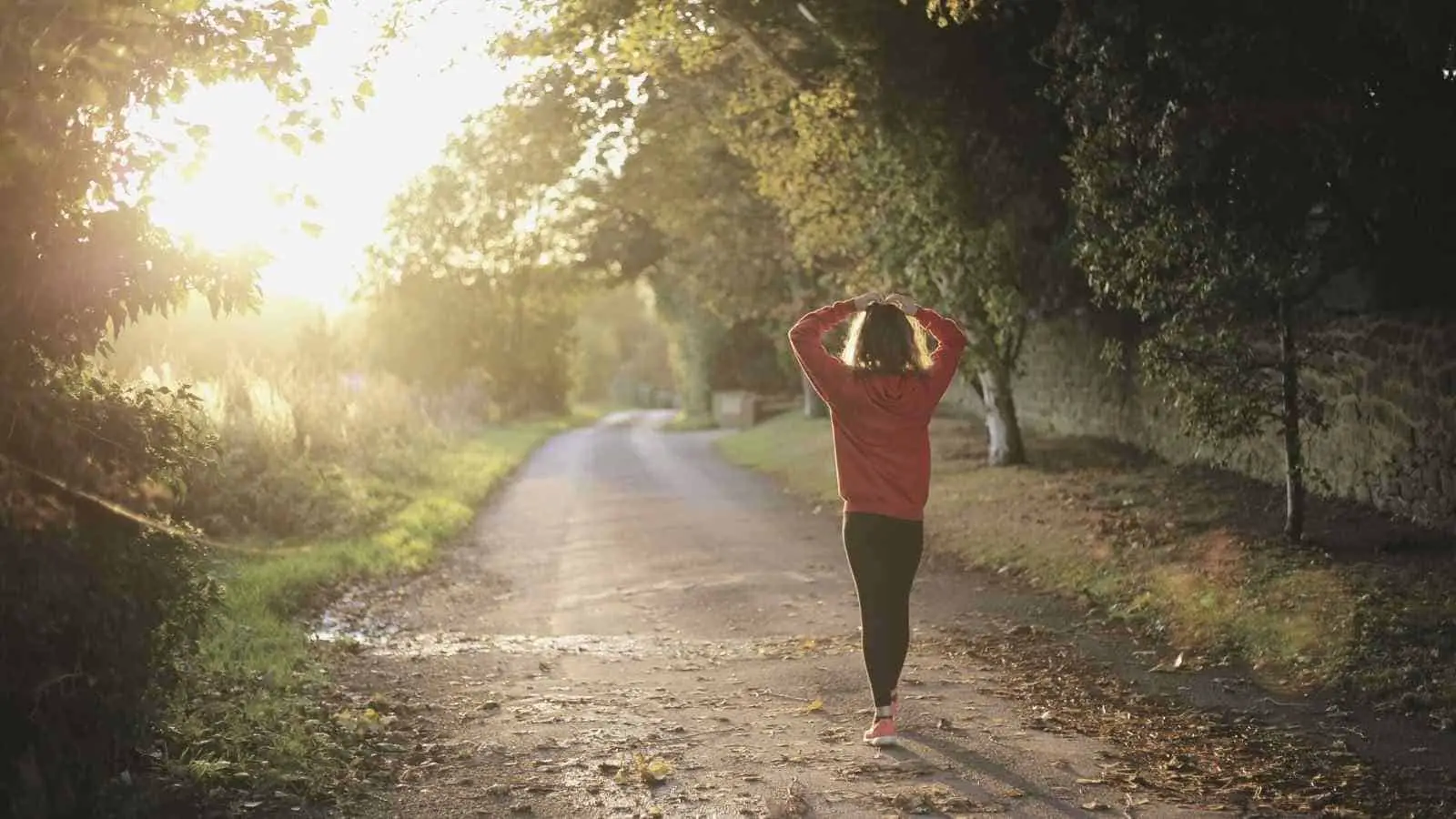Yoga is an ancient practice that engages the mind, body, and spirit and helps you develop flexibility, strength, focus, and resilience through consistent practice. Pairing yoga with light cardio, such as a short walk or a quick warm-up, can be an effective way to maximize its benefits, but it’s essential to understand how to blend the two.
Whether you should do yoga before or after walking will depend on the kind of yoga you are practicing, what time of day you practice yoga, and your personal preferences.
In this article, I’ll explore whether walking should be coupled with yoga. I’ll also explore how you should combine yoga with walking if you choose to do so.
Why You Should Consider Walking Before Yoga
Some people prefer to take a short walk before immersing themselves in their yoga practice. There are a few reasons doing so can be beneficial, including:
Walking Can Help You Empty Your Mind

Walking around the block a few times can help clear stray thoughts that lie on the periphery of your mind. A quick walk can also banish mild anxieties you don’t want to bring into your yoga practice.
If you tend to overthink, or you’ve had a long, stressful day bombarded by various stimuli, a short walk can help you settle down and sink deeper into your practice.
However, sitting in padmasana (lotus position) and focusing on one’s breath or engaging in pranayama (breathwork) can also help steady the mind, so you don’t need to walk before yoga if you don’t want to.
The effects of walking will differ from person to person. In fact, for some practitioners, walking can instead trigger the creative process, causing the mind to go astray quickly. It can be tricky to bring the mind into equilibrium when you step on the mat in this instance.
You’ll have to try walking before a session and pay attention to how it affects your state of mind before and during your practice.
Walking Can Help You Loosen Up
Walking can be an effective way for those who practice yoga first thing in the morning to loosen up the body and get the circulation going before performing any asanas (postures).
Some of us tend to wake up feeling a little stiff or dull. It can be challenging to perform the first Surya namaskar (sun salutation – usually the first series of movements during a yoga session).
A short walk can help loosen up the body and awaken the mind, so you’re able to perform the asanas with ease.
Again, it’s essential to use one’s discretion here as the effects of a pre-routine walk will differ between people. Some of us may wake up with less stiffness and find it easier to practice yoga to release tight muscles first thing in the morning.
Walking Before Hatha Yoga Can Be Beneficial
Out of the different types of yoga, Hatha is among the most common. It’s a gentle form of yoga that focuses on the mind, body, and breath connection to enhance the body’s pliability and infuse it with prana (life energy).
The word ‘Hatha’ is derived from the combination of two words. ‘Ha’ means sun, and ‘tha’ refers to the moon, and the purpose of hatha yoga is to balance the active and hot elements with the receptive and cool aspects of your nature.
Hatha yoga focuses on regulating the body’s energy flow through meditative practice. Walking before a hatha yoga session can help dispel the excess mental energy most of us carry around with us.
As such, a short walk can help get rid of this surplus energy and make it easier to get into the flow during your hatha yoga practice. While this may not be true for everyone, walking can help settle the mind before stepping on the mat.
Why You Should Consider Walking After Yoga
It’s crucial to remember that yoga is a form of movement that engages the entire body, and walking can be deemed entirely unnecessary in most cases. That being said, walking after yoga can be beneficial in a completely different way.

While walking before yoga can help release unconscious processes and relieve tension, a walk after your yoga session can help the mind ease back into the state of reality and external stimulus.
In many instances, experienced practitioners tend to dive deep during their sessions, attaining a level of clarity that can seem surreal to regular minds. However, this can happen to beginners and intermediate practitioners from time to time.
A short walk after an intense yoga session can help gradually bring the mind back to reality by introducing it to external stimuli in a slow, controlled way. For those who aren’t used to the level of clarity yoga provides, a short walk can help acclimate them to the real world.
Walking is a practice used by the greatest thinkers to facilitate creative thought, contemplate life experiences, and ponder over crucial decisions.
While walking after a yoga session isn’t necessary, if you tend to get lost in thought during long walks, the extra clarity offered by yoga can help you refine your thoughts better.
If you’re someone who uses walking as a means to explore mental processes and for creative stimuli, a yoga session before your walk can help bring a sense of clarity to your thoughts.
Times When There’s No Need To Walk Before or After Yoga
For those practicing a more intense form of yoga, like Ashtanga, walking before can be counterproductive as you waste the valuable energy you need for the session.
Sessions of intense or specialized forms of yoga, like Ashtanga and Bikram yoga, are extremely tiring, and most practitioners need a rest right after. This means there’s no point walking afterward – or tiring yourself early with a walk before the session.
Final Thoughts
Most people who practice yoga usually do so after an intense cardio session or a workout. During this time, the muscles and joints are loose and malleable and can be stretched and strengthened.
While walking before or after a session can be beneficial in some instances, it’s not entirely necessary, as mentioned in the article. However, each person has a unique way of approaching yoga and fitness. What might work for some can be entirely unhelpful for another. You must figure out what works best for you as you make yoga a part of your daily routine.





